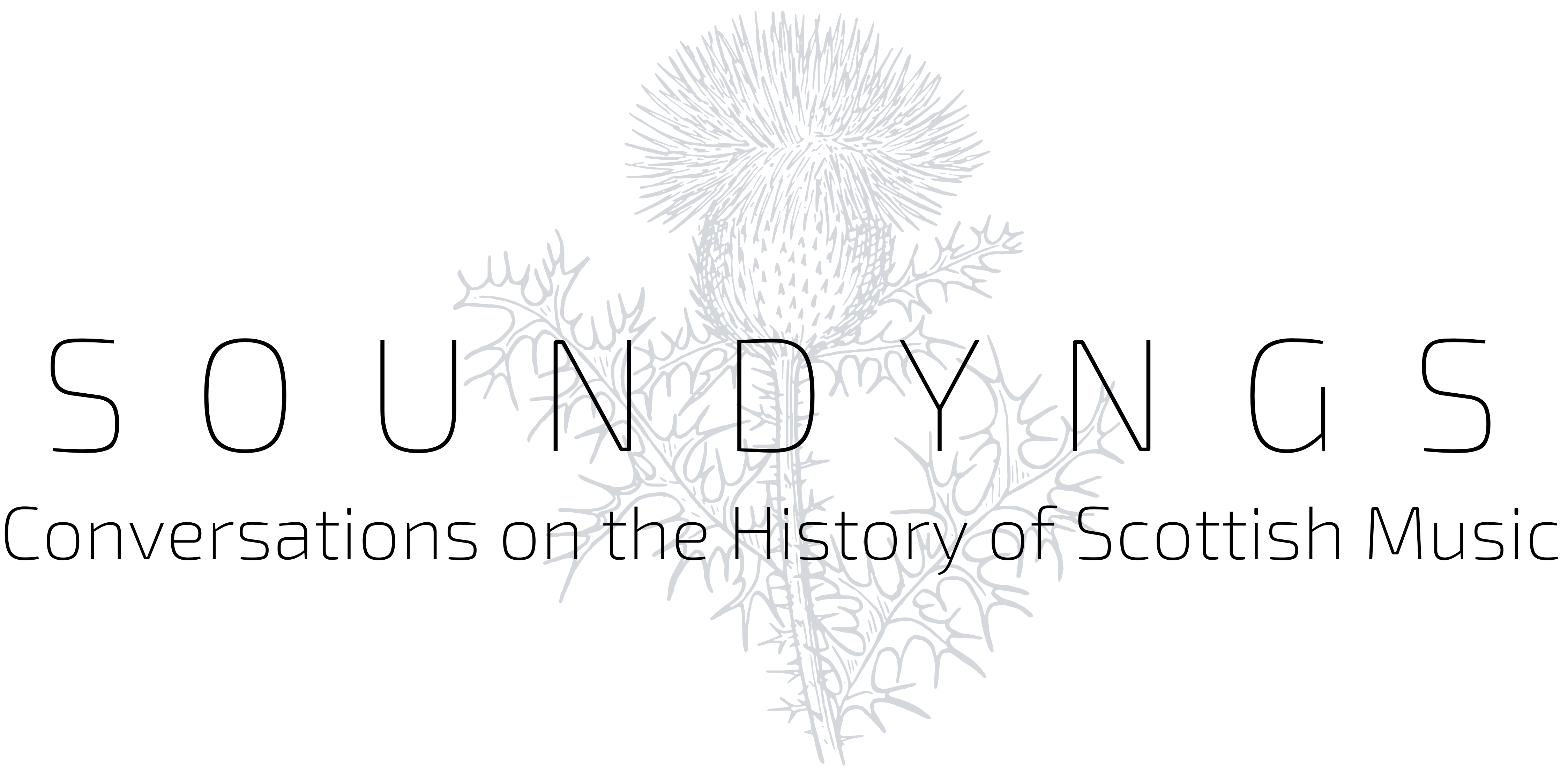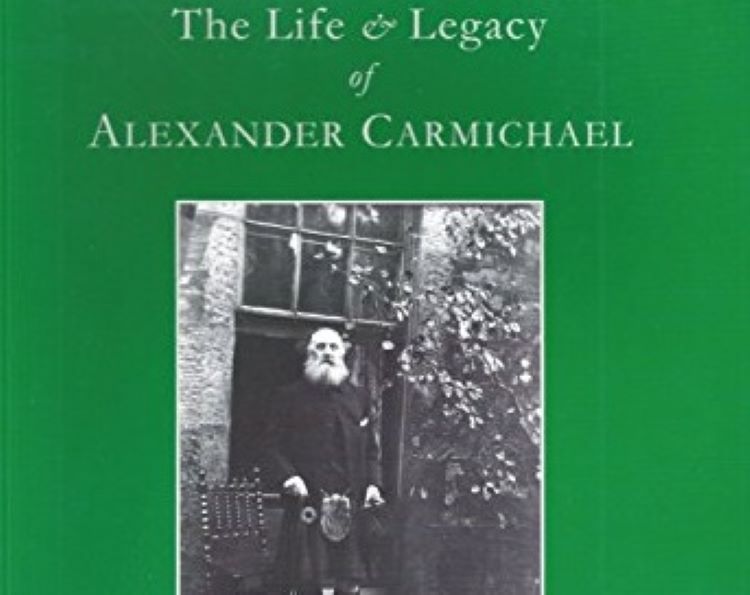Soundyngs welcomes guest writer Catherine Helferty, BMus BEd, who is an MLitt candidate in Sacred Music at the University of St Andrews. She has a background in Catholic liturgical music and served as Sessional Instructor (2021-2022) then Lecturer (2022-2023) in Sacred Music at Our Lady Seat of Wisdom College, Barry’s Bay, Ontario. In this post, she reviews a book of essays from a 2006 conference on Alexander Carmichael.
Controversial, yet crucial to the story of Scottish Gaelic folklore, Alexander Carmichael (1832-1912) was one of the foremost Scottish field work collectors of the nineteenth century.
Who was Carmichael?
Carmichael was raised on the Island of Lismore but would live for many years in the Outer Hebrides and eventually die in Edinburgh. His career as an exciseman gave him access to a wide population from whom he collected folklore. Some of the immense amount of material which Carmichael collected was published in the six-volume Carmina Gadelica (1900-71), which contain hymns, chants, and charms in Gaelic, with English prose translations and contextual notes. Carmichael’s wife, Mary Frances MacBean (1841-1928), contributed some illuminated text modelled after Celtic manuscripts, adding yet another layer of richness to the books (Murdo MacDonald, p.136).
Conference as Cultural Curation
The Life & Legacy of Alexander Carmichael, edited by Domhnall Uilleam Stiùbhart, is a publication of papers presented at a conference arranged by The Islands Book Trust in Benbecula in July 2006. The conference seems to have been an extension and exemplification of the ethnographic recording of the Gaelic culture that Carmichael himself devoted his life to preserve. In the introduction, John Randall explains that the conference included not only formal talks, but also sessions in which participants heard testaments from ‘descendants of families who knew Carmichael,’ visited various locations associated with Carmichael, and were given the opportunity to immerse themselves more deeply in shared experiences such as a religious service and a ceilidh (Randal, p,xi). In short – this was not simply a conventional academic event. The conference clearly set out to mirror the multiplicity of approaches taken in Carmina Gadelica where poetry, prose, and image integrate a wide range of life experiences. Reviewing this book almost 2 decades after the conference, I understand from this program that the organisers wanted us to realise how both sacred and secular experience shaped the poetry and song that Carmichael collected. Historical accounts bear out this interest in religion: the book cites the Very Rev. Angus John, Canon MacQueen’s anecdote of him as a young man replacing the authorized English-language Bible at his bedside with Carmina Gadelica (The Very Rev.Angus John Canon MacQueen, p.183). Carmichael’s work clearly still resonates with people from the Gaelic communities he helped to commemorate.
Conference Proceedings
The book includes thirteen chapters exploring various aspects of Carmichael’s life and work, along with ethnographic interviews from people in the localities Carmichael wrote about, who clearly still value his work. Threaded throughout is an awareness of the limitations and strengths of Carmichael’s working methods, prompting this reviewer to question what the role of the field work collector is. Is it possible for a human being to be impersonal enough to not interfere at all when collecting cultural material? How could such a theoretically ‘disinterested’ person be capable of convincing people to share such precious materials? Ethnomusicologist Timothy Rice phrases it well: “not only do we choose our research subjects: they choose us as well, sometimes, indeed usually, because they think they and their musical tradition will benefit from the interaction as well” (Rice, p.31).
Domhnall Uilleam Stiùbhart’s opening essay provides an informative summary of the life of Alexander Carmichael and his work on Carmina Gadelica. He explores some of the psychology of Carmichael, showing Carmichael’s painstaking concern with upholding the dignity of the Gael through his work. At the same time, Carmichael was very self-critical regarding his own ability to communicate both in the best light and faithfully the culture of the Gàidhealtachd. Despite his reservations, Carmichael collected an immense amount of material, and the first two volumes of Carmina Gadelica were published in his lifetime. The following four volumes were published posthumously thanks to his daughter Ella (1870-1928) and her husband, Professor William J. Watson (1865-1948), their son, Professor James Carmichael Watson (1910-1942), and Angus Matheson (1912-62) who carried on his work (Domhnall Uilleam Stiùbhart, p.32).
Ronald Black’s ‘I Thought He Made It All Up: Context and Controversy’ confronts head-on the question of what ‘folklore’ is, contending with Hamish Robertson’s 1976 paper ‘Studies in Carmichael’s Carmina Gadelica.’ The controversy highlighted by Robertson stems from Carmichael’s approaches to fieldwork which sometimes resulted in published material that differed from the original material collected. Black takes a step back from Scotland, looking more broadly at folklore methodology prevalent at the time, and defends Carmichael’s approach as in line with the ‘propagandist’ approach of Wilhelm Grimm of Grimms’ fairy tales. Rather than publishing a fairy-tale word for word, Grimm made changes “to make it appear all the more German … Proverbs were added to give the collection a more folksy texture, and the proper moral sentiments were woven into the text, for this collection was to be in many ways a showcase for German folk culture” (Ronald Black, p.64). Black analyses some texts from Carmina Gadelica drawing a parallel with Carmichael’s approach to Gaelic folk culture.
Other highlights of the volume include:
- Hugh Cheape’s piece, ‘”Every Treasure You Chanced On”: Alexander Carmichael and Material Culture’ which explores some of the artifacts Carmichael collected over the years: such as a bronze sword from South Uist, brooches, coins, charms, amulets, drift-seeds, jewellery, and textiles (Cheape, p.118).
- Meghan Cote provides insights in ‘Future plans for the Carmichael Watson Collection’ into future archive-based research opportunities. The Carmichael Watson Collection is in the Edinburgh University library and contains Carmichael’s fieldwork notes. Cote describes the three phases of the Carmichael Watson Project which seeks to catalogue and digitalize material for wider academic and public access.
- Cathlin MacAulay’s ‘Uist in the School of Scottish Studies Archives’ provides an overview of contents of the School of Scottish Studies Archives, along with some photographs, and shares a transcription of a story about Carmichael from the archive.
- Murdo MacDonald discusses the artwork in Carmina Gadelica in ‘The Visual Dimension of Carmina Gadelica’.
- Other essays also include information on his relationship with specific families and locations.
The book includes a helpful index at the back for those looking for specific topics of interest. Gaelic texts are usually given alongside English translations. All in all, this collection of essays is essential reading for those interested in Gaelic folklore, and succeeds in continuing more than one conversation: how can we best understand and use Carmichael’s contributions, and what is the role of the field work collector?
Further Reading
- Domhnall Uilleam Stiùbhart (ed.) The Life & Legacy of Alexander Carmichael (Port Of Ness: Island Book Trust, 2008) particularly citing above –
- Ronald Black, ‘I Thought He Made It All Up: Context and Controversy’, in The Life and Legacy of Alexander Carmichael, pp.57-81
- Hugh Cheape, ‘”Every Treasure You Chanced On”: Alexander Carmichael and Material Culture’, ibid, pp.115-134
- Murdo Macdonald, ‘The Visual Dimension of Carmina Gadelica’, ibid, pp.135-145
- John Randall, ‘Introduction and Conclusions’, ibid, pp.xi-xiii
- Domhnall Uilleam Stiùbhart, ‘Alexander Carmichael and Carmina Gadelica’, ibid, pp.1-39
- Alexander Carmichael, Carmina Gadelica: Hymns and Incantations, with Illustrative Notes on Words, Rites and Customs, Dying and Obsolete, Orally Collected in the Highlands and Islands of Scotland and Translated into English, 6 vols (Edinburgh: Oliver and Boyd, 1900–1971) – the National Library of Scotland has digital scans of some of these volumes available with other Gaelic song in printed from the late 19th / early 20th century in its Ossian Collection.
- Laurie Patton. ‘Alexander Carmichael, Carmina Gadelica, and the Nature of Ethnographic Representation’ Proceedings of the Harvard Celtic Colloquium, 8 (1988), pp.58–84
- Jane Pettegree, ‘A Fresh Look at the Carmina Gadelica: Recent Research by Domhnall Uilleam Stiùbhart’ in Soundyngs, (25 January 2023), accessed 27 February 2024 – which lists some more recent research undertaken, including work by those at the 2006 conference
- Timothy Rice. Ethnomusicology: A Very Short Introduction (New York: OUP, 2014)
- Hamish Robertson, ‘Studies in Carmichael’s Carmina Gadelica’, Scottish Gaelic Studies, 12 (1976), 220–65.

